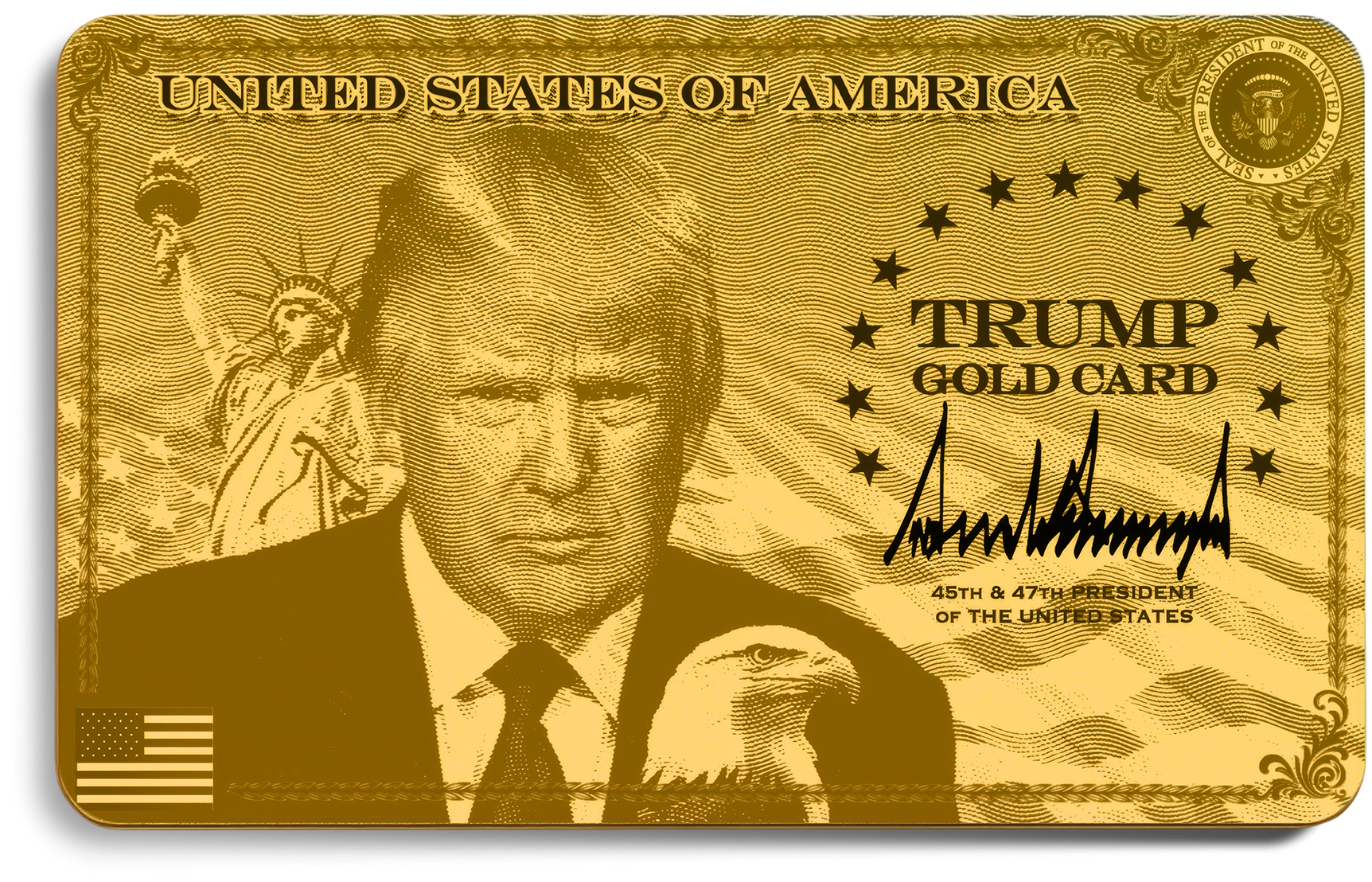ARTICLE AD BOX

US President Donald Trump on Friday announced the launch of the much-anticipated “Gold Card Visa”, a program designed to attract wealthy individuals and corporations by offering them fast-track US residency in exchange for hefty investments.“They’re going to spend a lot of money to come in,” Trump told reporters Friday in the Oval Office as he signed the order to create the visa program.“It’s going to raise billions of dollars, billions and billions of dollars, which is going to go to reduce taxes, pay off debt and for other good things,” he added.The program introduces a tiered visa system, including the Gold Card ($1 million) and the upcoming Platinum Card ($5 million), along with a separate Corporate Gold Card for businesses sponsoring employees.
Trump Gold Card Visa: Residency through a $1 million investment
The Trump Gold Card is the centerpiece of the new visa scheme. Individuals who wish to apply must pay a non-refundable processing fee (estimated at $15,000) and undergo Department of Homeland Security (DHS) vetting.If approved, applicants must make a $1 million contribution to the US Treasury, which the administration defines as a “gift” to demonstrate that the individual will substantially benefit the country.
According to the program’s official website: “The Trump Gold Card is a visa based upon an individual’s ability to provide a substantial benefit to the United States. To apply, an applicant must pay a nonrefundable processing fee. Once an applicant’s processing fee is received, the process for visa adjudication will take place… If approved, an individual must make a gift of $1 million, which has been determined to provide sufficient evidence that the individual will substantially benefit the United States.
”Trump officials said successful applicants will be granted lawful permanent resident status, equivalent to EB-1 or EB-2 visa classifications, but processed in “record time.”
What the Trump Gold Card looks like?
The card itself is styled like a luxury credit card. It features a gold background, Trump’s portrait, the Statue of Liberty, and the US flag, with “Trump Gold Card” stamped on the left.The Platinum Card design has not been revealed yet, but the website encourages applicants to join a waitlist immediately, with applications processed on a first-come, first-served basis.

According to the program, the Gold Card grants lawful permanent resident status under the EB-1 or EB-2 visa categories, subject to DHS approval. That would put recipients on a path to US citizenship, though officials have not specified exact timelines for naturalisation.
Trump Corporate Gold Card
The Corporate Gold Card allows companies to sponsor foreign employees. For each worker sponsored, the business must contribute $2 million after DHS vetting and a processing fee.One feature that may appeal to businesses is flexibility. If a company ends the sponsorship of one employee, it can transfer the original $2 million contribution to another worker without paying the amount again.As the website explains, “The Trump Corporate Gold Card is issued to a corporate sponsor for one or more of the sponsor’s employees. To apply, the corporate sponsor must pay a nonrefundable processing fee per employee.
Corporate sponsors may apply for multiple employees at once. A $2 million per employee gift upon completion of the employee’s vetting is evidence that the employee will substantially benefit the United States.
The advantage of the Trump Corporate Gold Card is that corporate sponsors may cease sponsoring one employee and use the gift contribution tied to the prior application as a basis for sponsoring a new employee without a new $2 million gift.
The Trump Corporate Gold Card is subject to a small annual maintenance fee and a transfer fee.”The program, however, includes annual maintenance fees and transfer charges for each reassignment.
Trump Platinum Card Visa
The Platinum Card, still pending congressional approval, will target ultra-wealthy individuals willing to invest $5 million. In exchange, recipients can reside in the United States for up to 270 days a year without paying taxes on non-US income.Commerce Secretary Howard Lutnick said he expects approval “later this year,” adding that the Platinum Card could significantly expand America’s ability to attract capital.The administration has marketed this tier as a unique mix of residency, extended stay rights, and tax incentives, making it especially attractive to high-net-worth individuals with global income streams.
Program funding and implementation
Trump signed an executive order directing that revenue from the Gold and Platinum Cards be deposited into a “separate fund” at the Treasury, earmarked for commerce promotion and debt reduction.Lutnick added that applicants would face “a much more rigorous vetting than has ever been done before,” and that the program would replace existing EB-1 and EB-2 visas. He said other green card categories would likely be suspended once the Gold Card model is implemented. The administration expects the rollout phase to last less than a month.
Potential Impacts: Immigration and business
The announcement signals a dramatic reshaping of US immigration policy. The Gold Card would replace traditional skill-based visas like EB-1 and EB-2, while Trump has also proposed a $100,000 application fee for H-1B visas, used by technology firms to hire skilled workers.Tech executives could be divided: while the Gold Card allows for new inflows of capital and workers under corporate sponsorships, the higher cost of H-1B visas could burden companies like Accenture and Cognizant. Shares of both firms dipped on Friday following Trump’s announcement.Immigration experts have also raised doubts about Trump’s claim that up to one million Gold Cards could be sold, pointing out that the pool of individuals able to afford the $1 million buy-in is relatively small.Trump first teased the Gold Card program in February, presenting it as an initiative that could draw global capital, create jobs, and reduce the deficit. On Friday, he reiterated its fiscal impact:Despite skepticism about demand, the Gold Card represents one of Trump’s most sweeping attempts yet to monetise the US immigration system while tying it directly to national revenue goals.



.png)
.png)
.png)
















 1 hour ago
4
1 hour ago
4









 English (US) ·
English (US) ·